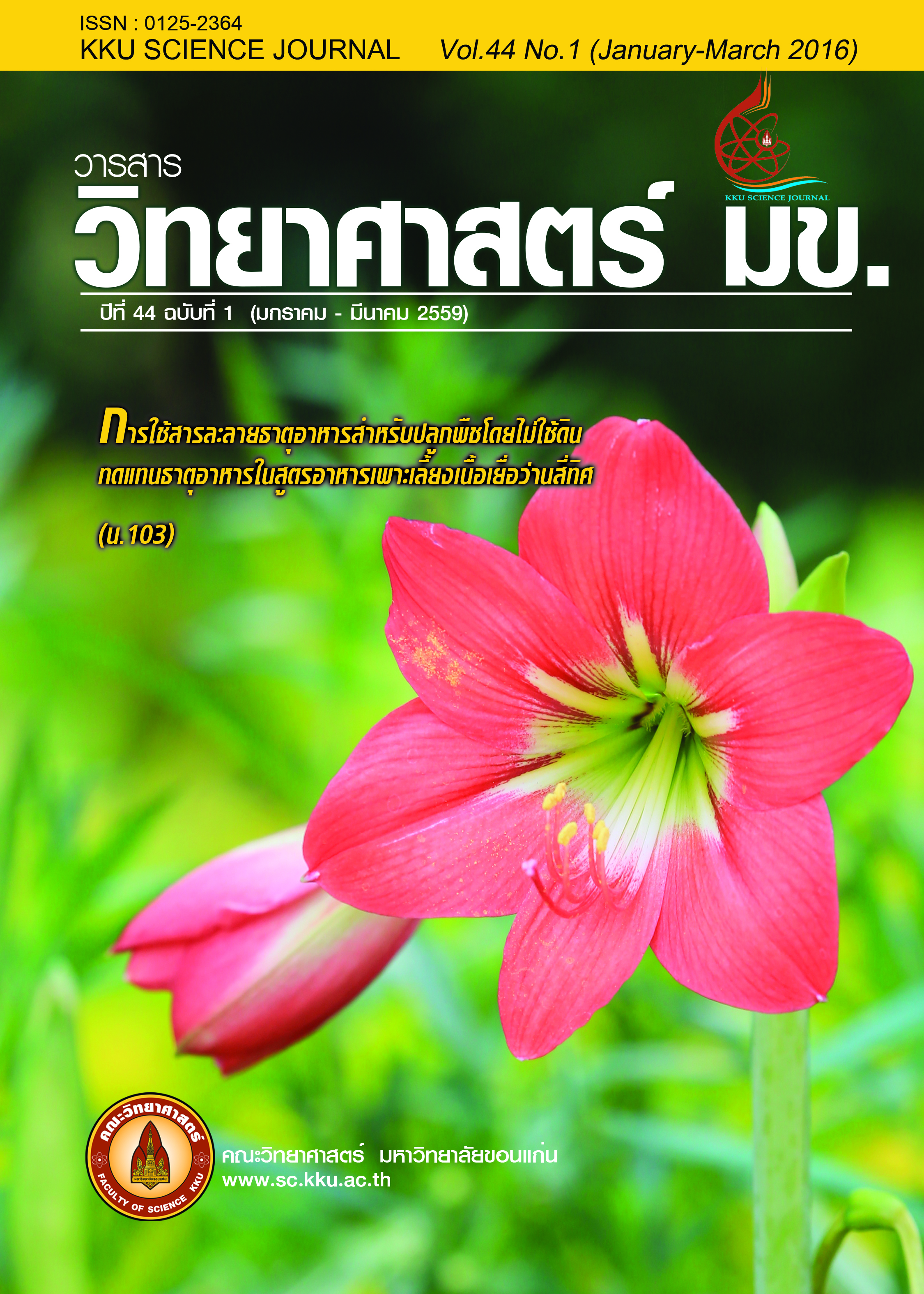Screening of bacteria and yeasts for transesterification biocatalyst in biodiesel production using waste cooking oil
Main Article Content
Abstract
This research emphasized on screening and morphological study of lipase-producing bacteria and yeasts isolated from soil in the area of oil industry as well as lipase-producing mutant yeast. The strains with high lipase activity were conducted to use as mixed culture for being as biocatalyst in biodiesel production. The results found that 8 strains of bacteria, 7 strains of wild type yeast, and 1 strain of mutant yeast were obtained from primary screening by culturing in solid media containing 1 mg/ml of rhodamine B and waste cooking oil as carbon source at 30 °C for 48 hr. The orange-pink colonies were selected and secondary screened in liquid media containing waste cooking oil as carbon source in order to determine for lipase activity. The results revealed that strain KPB8 (bacterium), KPY9 (wild type yeast), and G47 (mutant yeast) gave maximum lipase activity and had significantly value of 0.31, 0.34 and 0.4 U/mL, respectively at p£0.05. After that, they were subjected to examine as biocatalyst in transesterification by culturing as mixed culture in waste cooking oil and ethanol. The percentage of ester produced from reaction was calculated after analyzed the supernatant by gaschromatography mass spectrometry (GC-MS). The result showed that isolate KPB10, KPY9 and G47 had ability for being good catalysts in transesterification which gave rise the percentage of esters of 30.7, 12.2 and 42.9, respectively.
Article Details

This work is licensed under a Creative Commons Attribution-NonCommercial-NoDerivatives 4.0 International License.


